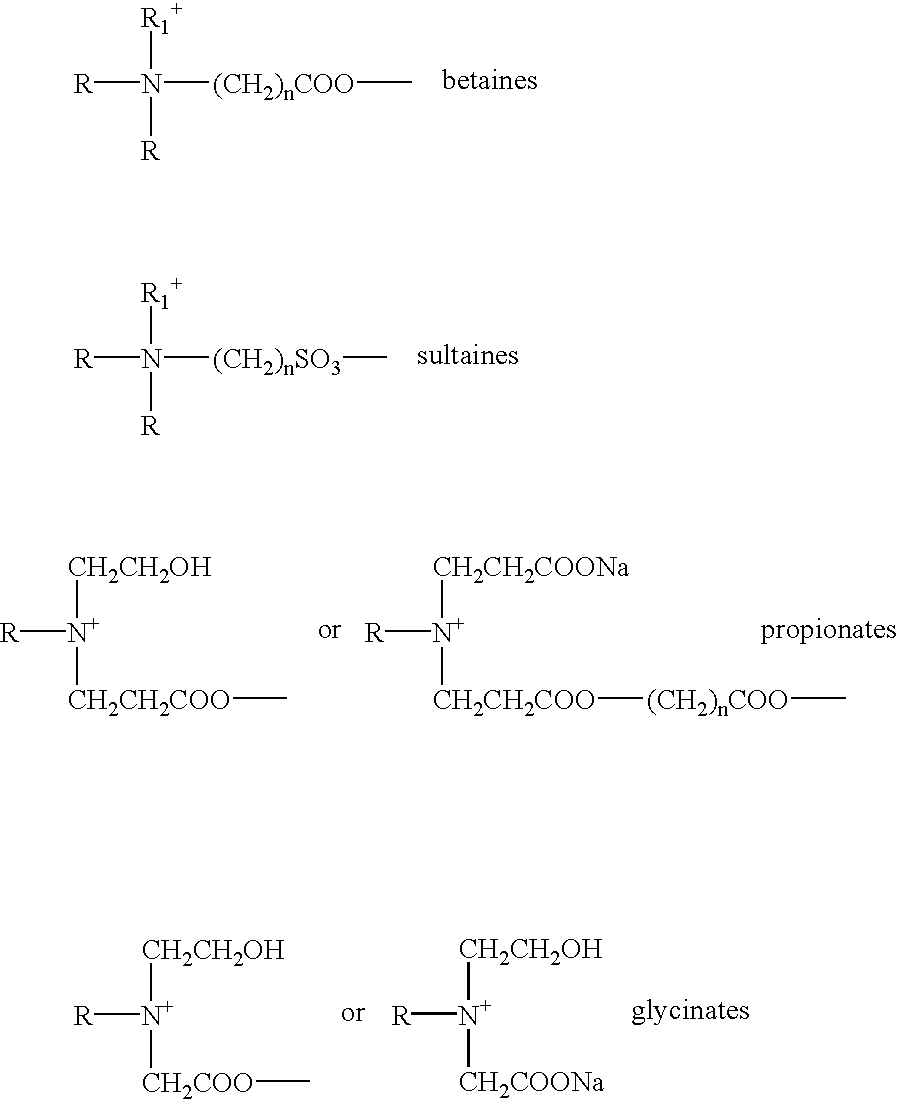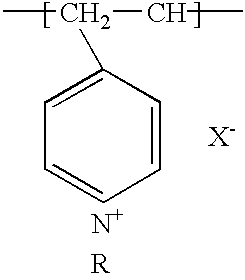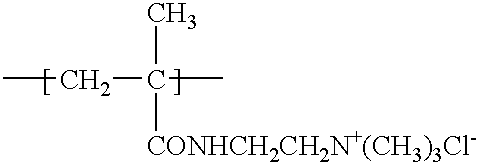Two-part aqueous composition for oxidative coloration of hair
a technology of oxidative coloration and aqueous composition, which is applied in the field of two-part aqueous composition for oxidative coloration of hair, can solve the problems of less than 50% water in the composition, still high dye mixture content, and incompatible with anionic surfactants
- Summary
- Abstract
- Description
- Claims
- Application Information
AI Technical Summary
Benefits of technology
Problems solved by technology
Method used
Image
Examples
Embodiment Construction
[0126] Dye base lotions this invention (Formulations A, B C and D) was prepared from the following ingredients.
1 FORMULATION A Ingredient Wt. % D.I. water 58.8420 Hexylene glycol 15.6000 C11-15 Pareth-9 4.5300 Monoethanolamine 4.5000 Dilinoleic acid 3.6000 Soytrimonium chloride and propylene glycol 3.4000 Schercoquat 21AP 2.0000 Oleamide MIPA 1.5000 Fragrance 1.0000 p-Aminophenol 0.6870 Oleth-10 0.6800 Erythorbic acid 0.5000 Citric acid 0.5000 Resorcinol 0.4950 m-Aminophenol 0.3820 p-Phenylenediamine 0.2920 1-Naphthol 0.1820 EDTA 0.1000 Oleth-2 0.1000 Sodium sulfite 0.1000 Cyclomethicone I 0.0100
[0127]
2 FORMULATION B Ingredient Wt. % D.I. water 58.8420 Hexylene glycol 15.6000 C11-15 Pareth-9 4.5300 Aminomethylpropanol 3.0000 Dilinoleic acid 3.6000 Soytrimonium chloride and propylene glycol 3.4000 Schercoquat 21AP 2.0000 Oleamide MIPA 1.5000 Fragrance 1.0000 p-Aminophenol 0.6870 Oleth-10 0.6800 Erythorbic acid 0.5000 Citric acid 0.5000 Resorcinol 0.4950 m-Aminophenol 0.3820 p-Phenyle...
PUM
| Property | Measurement | Unit |
|---|---|---|
| water content | aaaaa | aaaaa |
| water content | aaaaa | aaaaa |
| temperature | aaaaa | aaaaa |
Abstract
Description
Claims
Application Information
 Login to View More
Login to View More - R&D
- Intellectual Property
- Life Sciences
- Materials
- Tech Scout
- Unparalleled Data Quality
- Higher Quality Content
- 60% Fewer Hallucinations
Browse by: Latest US Patents, China's latest patents, Technical Efficacy Thesaurus, Application Domain, Technology Topic, Popular Technical Reports.
© 2025 PatSnap. All rights reserved.Legal|Privacy policy|Modern Slavery Act Transparency Statement|Sitemap|About US| Contact US: help@patsnap.com



